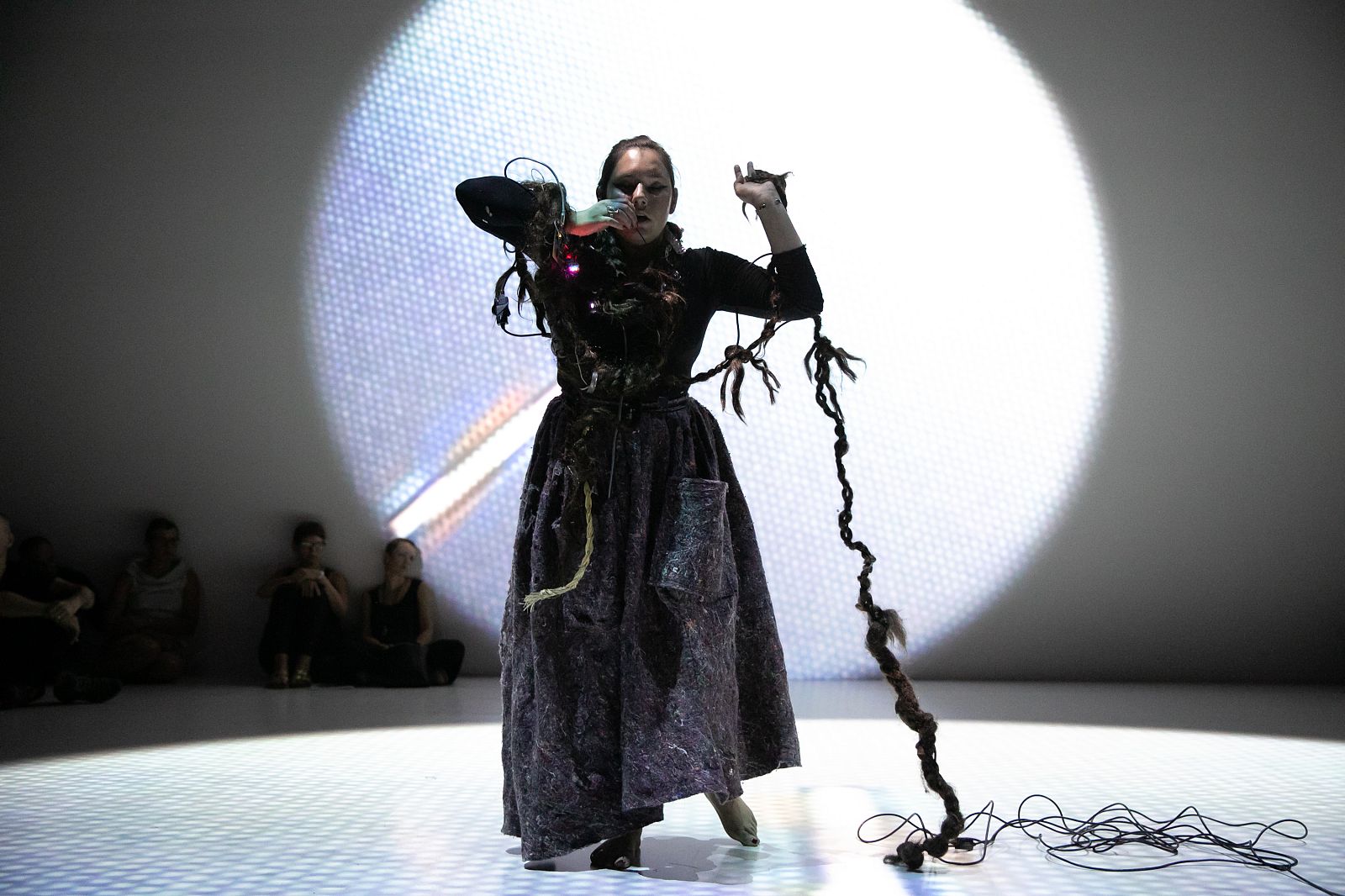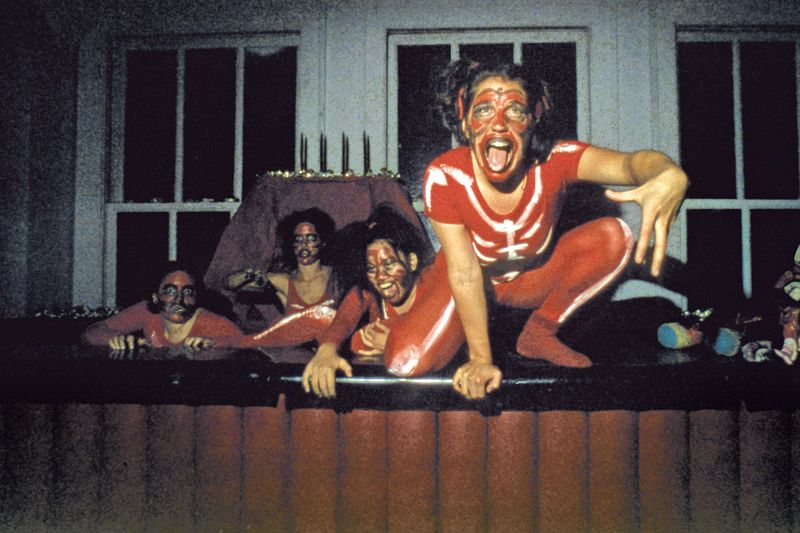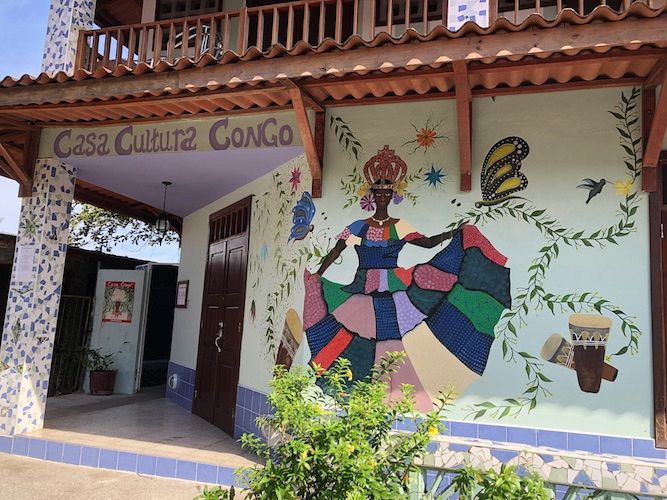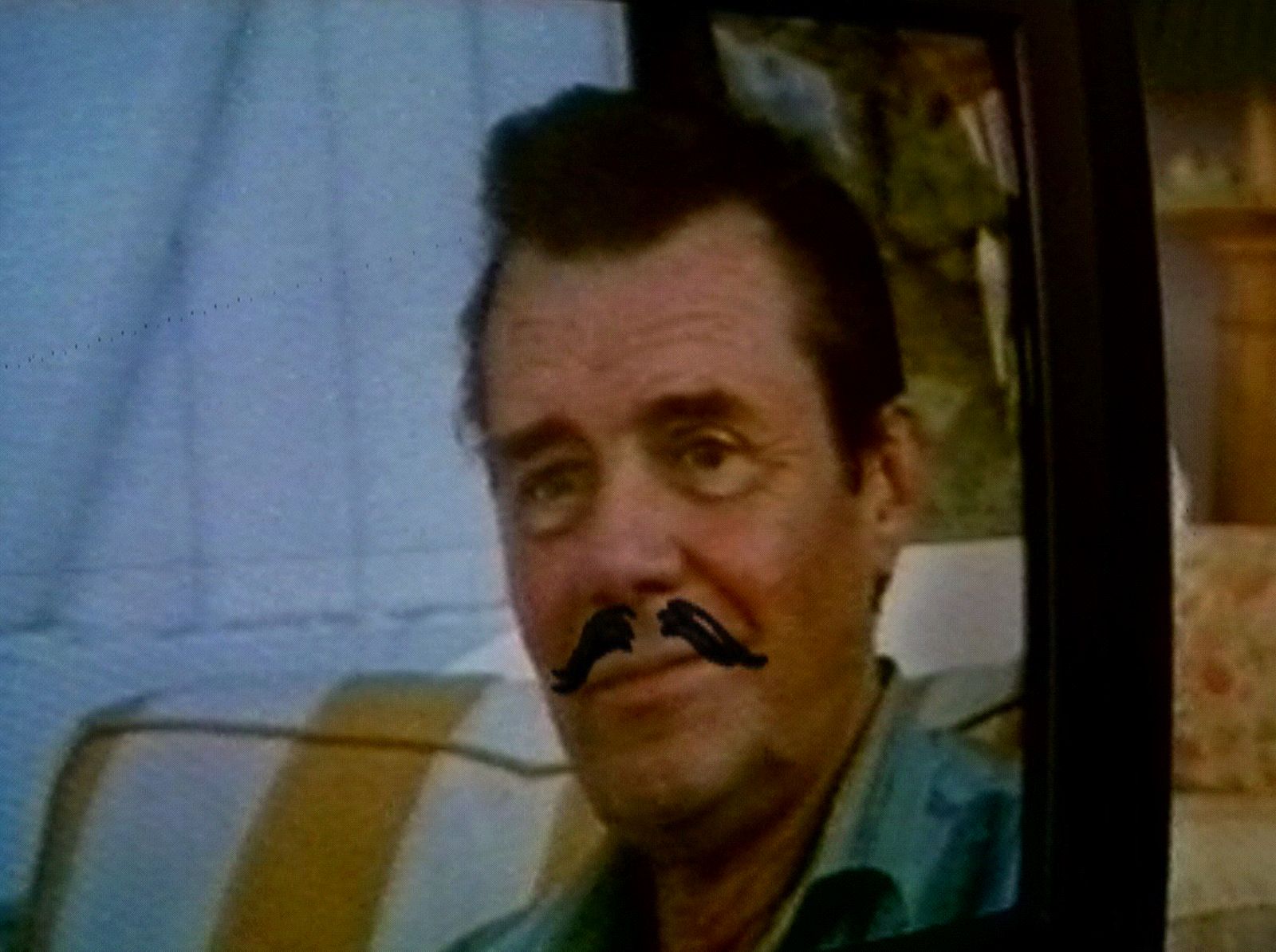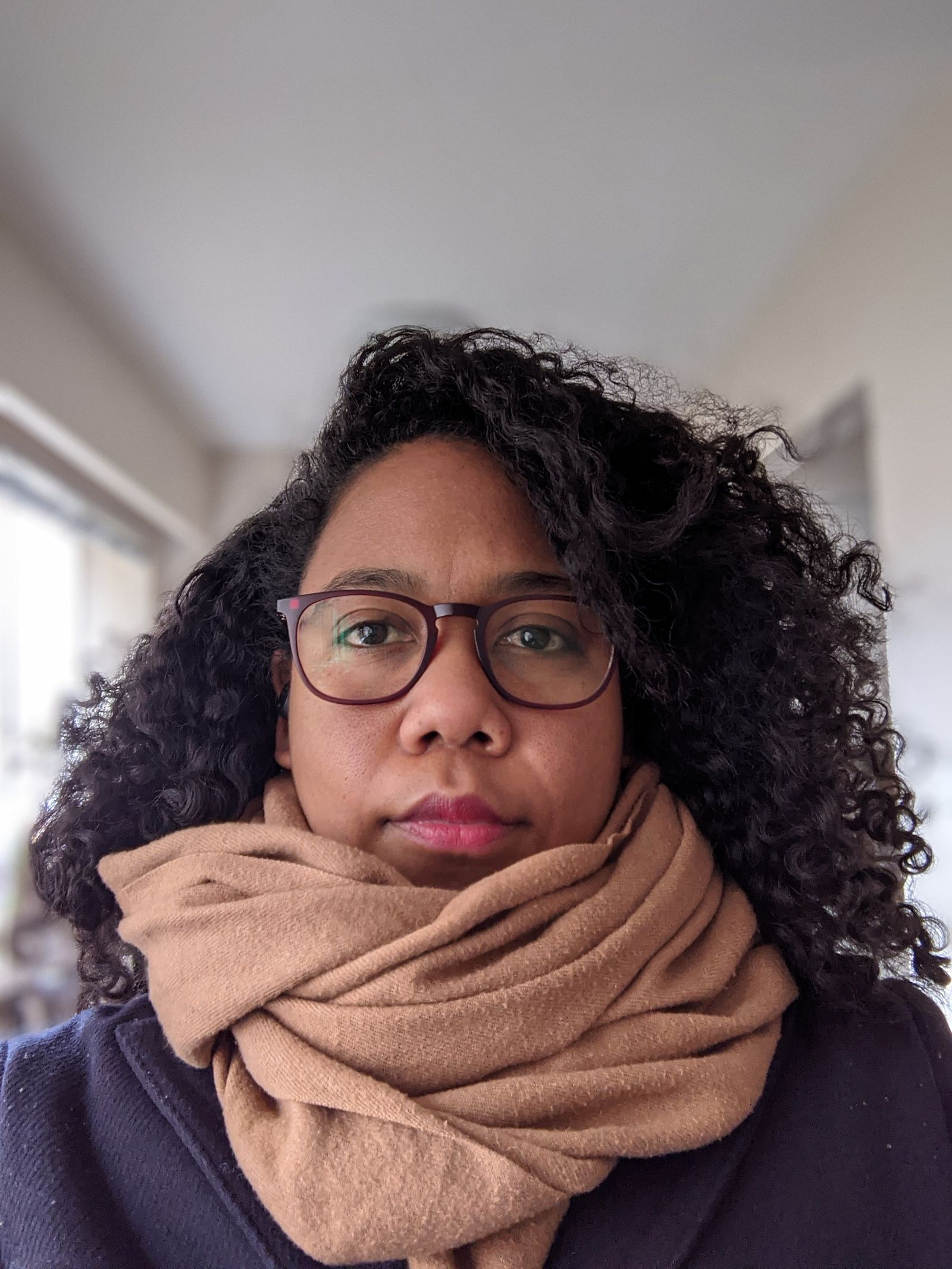Doryun Chong, Associate Curator of Painting and Sculpture at MoMA, is the recipient of the first Gerrit Lansing Independent Vision Award. This award has been inaugurated to reflect ICI's commitment to supporting international curators early in their careers who have shown exceptional creativity and prescience in their exhibition-making, research, and related writing.
Chong was selected to receive the Independent Vision Award for the recent exhibitions he has curated and co-curated in a range of venues nationally and internationally, including Bruce Nauman: Days (MoMA, 2010); Brinkmanship: Park Chan-Kyong and Sean Snyder (REDCAT, 2010) with Clara Kim; Haegue Yang: Integrity of the Insider (Walker Art Center, 2009–10); Tetsumi Kudo: Garden of Metamorphosis (Walker Art Center, 2008-9); Brave New Worlds (Walker Art Center, 2007) with Yasmil Raymond; and the 2006 Busan Biennial. Through these exhibitions Chong has not only demonstrated multiple, global understandings of artworks and their contexts, but also an unusual eloquence in the possibilities of display and discourse. Chong’s innovative research skills draw on several Asian and Romance languages and his training in Western European and East Asian philosophy and art history. Considered the top translator of writing on contemporary art from Korea, Chong is also responsible for the groundbreaking lexicon on artist Huang Yong Ping’s complex web of meanings, intentions, history, conflict, and culture. Chong is currently Associate Curator of Painting and Sculpture at MoMA. Prior to this, Chong was a curator in the Visual Arts department at the Walker Art Center from 2003 to 2009.
This interview with Chong by ICI’s Executive Director Kate Fowle focuses on his practice to date from his academic training and how he got into exhibition-making to his recent move to MoMA. In the interview, Chong analyzes what it means for him to be an international curator today, discussing in depth his research methodologies and the complex processes of translation he undertakes in his exhibitions with artists like Tetsumi Kudo, Huang Yong Ping, and Sean Snyder. Ultimately his practice is grounded in an understanding that "context is rarely singular or an aggregation of multiples, but almost always syncretic, interpenetrating, and hybrid, and and that by understanding that, a curator could potentially also help an artist extend his or her practice as a consequence."

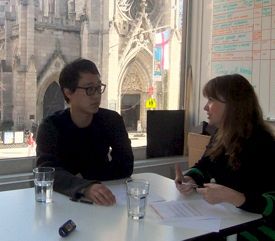
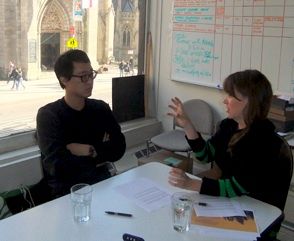
Kate Fowle: What got you interested in curating?
Doryun Chong: I didn’t go through a curatorial study program. In a sense, I had a much more classical training because I studied art history, both undergraduate and graduate, and I was not focused on contemporary art. In fact, my approach to art history was much more dilettantish—in the sense that I studied and explored a wide range without focusing on a particular field like modern or contemporary art. I had a strong interest in archaeology and pre-modern, religious art—from medieval European to Buddhist and Hindu—that led to thinking a lot about iconography and also the use of mythologies and narratives, which are concerns I’m still attracted to.
I made the switch to modern and then contemporary periods via social and cultural anthropology, focusing on topics such as labor relations in places like Southeast Asia, which was close enough, but sufficiently different from my cultural background to make it interesting for me. For example, I became fascinated by the research and work of Aihwa Ong, a fantastic teacher I had at Berkeley, who had conducted research in her native Malaysia, looking into young women who worked in multi-national factories and had this ability to fall into trance-like states, channeling ancestor spirits as a kind of physical and spiritual manifestation of resistance to their working conditions. Also I got really interested in the work of a number of people from the late 80’s on who were really pushing what is known as ‘new ethnography’, such as Paul Rabinow and James Clifford. They investigated the subjectivity of the western ethnographer doing research in, say, Morocco, or Indonesia, or other places that placed them in radically alien contexts. Through this advancement in anthropological theorization I was suddenly drawn to thinking about the issues of margin and periphery.
KF: I can see how the relationship between your interest in iconography and anthropology resonates in your current practice, from sitting at a desk and researching via books, to the kind of ‘field research’ you are engaged with in traveling extensively to see work and meet with artists. But more than that, this background perhaps reflects why you have a particular interest in artists who are themselves looking at social and cultural issues, or who are conducting research on how the world ‘works’. What’s interesting though, is that I don’t feel that your curatorial practice is in any way taking an ethnographic approach to understanding what’s happening internationally, which was certainly a trend of curating in the ‘90s. Instead you are representative of the next generation in terms of how your knowledge and experiences seep into your research and exhibition-making. While you are using words like ‘margin’ and ‘periphery’ which again come out of 90’s rhetoric, my sense is that you are not thinking of them in the same way at all?
DC: You are totally right. I think the field of curating borrowed a lot from anthropology in the 90’s, but there was a little bit of temporal deferral insofar as really inhabiting a process of thinking, or an approach to research. In that sense I am a kind of ethnographer or something, but definitely of the next generation and from a different perspective. Of course I could do this because I learned so much from the predecessors who realized important projects in the previous decade.
To return to my educational background, in graduate school my focus was non-western, or more specifically East Asian modern art; that’s the specificity I came to embrace perhaps because it’s originally where I came from. So I went from studying pre-modern, religious art to modern-contemporary art in East Asia and the larger non-West, via anthropology of distant countries. I guess that over the course of living and working in the States for 10 years, although I wasn't that interested in studying where I came from, somehow it made sense that I could take advantage of certain language skills and historical knowledge and apply that to the then non-existent field of the comparative histories of modern art in East Asia.
KF: What languages do you know?
DC: I am fluent in Korean, proficient in Japanese, and have some knowledge of Chinese. So I was interested in the comparative history of modern art within the region. Then, because it is a field that is so undeveloped I had to look to other areas for different models of research, such as Latin America, where theoretical models like Inverted Utopia and Anthropophagy, have been developed to understand the particularities of art and culture in the region, which has a lot to do with the conquest, and the implantation of European culture. I also think that post-colonial studies coming out of South Asia were very useful in thinking about another model.
In 1999 I also started working at the Asian Art Museum in San Francisco as a junior curator in the Japanese art department organizing exhibitions and taking care of the Japanese collection. So that’s really what set the tone in terms of my practice now; a traditional art history background with theoretical influences from different fields that I felt were dealing with contemporaneity better than art history or art theory.
KF: Since the Asian Art Museum you have worked in a variety of contexts, from being an independent curator for art centers and curating projects for biennials, to holding institutional positions at the Walker Art Center in Minneapolis and now the Museum of Modern Art in New York, but what I think what all your projects have in common is that you have focused on maintaining some kind of world perspective. You, like myself, started working at a time when issues around identity politics, globalization, and new internationalism were rife, and biennials were the way in which we got to know about artist’s practices from places that weren’t so-called ‘art centers.’ However, since around 2000, I think there has been a shift in the way that people are thinking about what ‘global’ really is and what being an international curator actually means. It is no longer always the case that the Western-educated curator is the expert. As you said, notions of what constitutes the margins or periphery and who defines these have changed, or at least expanded. So, how do you feel that your practice has developed an international approach without being involved in internationalism, or globalism?
DC: I’m really curious about this mysterious word “globalism,” because while I am very much part of the generation that grew out of and became forged in that discourse, I’d like to think I still don’t understand what it means exactly. At the Walker, we had this mantra that ran through all aspects of the institution, which was “Global, Diverse, Multidisciplinary.” While clearly this forward thinking came out of the legacies of civil rights movements and multiculturalism, and was a radical institutional move in the early 1990s when it started, when I started working at the Walker in 2003 and first heard the slogan, I thought “of course, perfect.” In other words, it felt natural to me, and it was completely in line with my training and thinking to that point and since.
KF: Its funny how those terms are malleable and yet so fixed in a way, so that they can mean something different to people at different times, or make sense of what you do to you, but don’t necessarily mean the same thing to others.
DC: Precisely—and what’s more when it actually got down to organizing exhibitions, and making catalogs, and acquiring works for the collection, you begin to realize that the mantra also needs to be seriously considered and translated.
So I had to think about what these words meant to me in a really deep way and understand what I could contribute to them; how I could bring something different to the institution while also working with seasoned curators who knew the landscape of contemporary art inside out, so much better than I did. One good case in point was House of Oracles, the retrospective of Huang Yong Ping, which was initiated by Phillipe Vergne and in which I got very involved because we realized we made a good team with our different perspectives and strengths complementing one another. Phillipe came from, shall I say, the continental European tradition and really had a unique (at least to me) appreciation of Huang’s work for its sculptural and spatial qualities. While I learned to appreciate those aspects, I became interested in analyzing Huang’s works in a iconographical and historiographic way, and this study of complex archaeological, bibliographical, and intellectual references in his work resulted in the lexicon of his practice in the catalogue and the map of his ideas.


![]()
House of Oracles: A Huang Yong Ping Retrospective installation views. Walker Art Center, 2005.
House of Oracles: A Huang Yong Ping Retrospective installation views. Walker Art Center, 2005.

House of Oracles: A Huang Yong Ping Retrospective installation views. Walker Art Center, 2005.
KF: So you considered the ‘language’ of the work and the more conceptual aspects of his practice?
DC: Yes, the intellectual ingredients of his work that might long have been lost or only superficially comprehended by the primarily Western audiences. I think the Huang Yong Ping retrospective and monograph was a critical project for me because it’s when I realized what the potential of this notion of “Global, Diverse, Multidisciplinary” was: here we are doing an exhibition of a contemporary Chinese artist who has shown all over the globe and even represented France in the Venice Biennial in 1999. In many respects he is an ‘international’ artist but still his work is under-recognized. You could say that about many artists, but I think it is especially true with artists that are non-western, as they are always sort of dealing with the over-simplification of their identity. I think what Phillippe and I accomplished is presenting Huang’s work in its complexity, through our approach in using the two divergent methodologies to think through his work; the modern history of contemporary sculpture as well as the history of pre-modern Chinese art, just like the iconic work by Huang called The History of Chinese Painting and the History of Modern Western Art Washed in a Washing Machine for Two Minutes (1987/1993). I don’t know that this has happened before in an exhibition of his work, and that’s when I realized what I could contribute to the field that was different.
KF: You mean you can suggest the complexity of practices in a way that actually makes sense in its own context?
DC: That a context is rarely singular or an aggregation of multiples, but almost always syncretic, interpenetrating, and hybrid, and that by understanding that, a curator could potentially also help an artist extend his or her practice as a consequence. I’ve also then used this kind of approach in subsequent monographic shows I’ve curated on the works of Haegue Yang and Tetsumi Kudo. I gravitated towards these artists because I thought that I could do something for them insofar as they are very much a part of the discourse of the contemporary Western art world, but it’s interesting and even critical to think about how to recognize their varying Asian backgrounds, concerns, lineages, and so on.
KF: I think this is a great example as to why you were nominated for the Independent Vision award. Your work involves really close research that enables you to develop projects in collaboration with others—both artists and curators—while also contributing something very specific that has to do with your particular expertise. In this way I think that you have been able to build a curatorial practice that allows for multiple approaches to make sense in one show, and similarly varied readings and impressions of the exhibition to feel natural, rather than fractured, or uncertain. This starts to break down the monumentalizing approach of the mega-exhibition or biennial toward various international practices, or the absolutism of shows that are specific to region or nationality. By starting with the work and the layers of language and form that come from it, rather than the biographical aspects of the artist, it is possible to think of words like international, global, diverse, and even diasporic, in very different ways, or at least from very different starting points.
Another aspect of your practice that I’d like to address is the way in which you have worked with artists over time, as this is something I think you have made a conscious decision to do and I’m wondering if you can talk about the effects of this. Perhaps we could talk about Sean Snyder as an example?
DC: Yeah, I think it would be really interesting to talk about Sean as I’ve now worked with him four times. I first got to think really seriously about his work in 2002, when Hou Hanru and Charles Esche featured his work in the Gwangju Biennial. That was his project about the unfinished Ryugyong Hotel in Pyongyang, North Korea. I wondered: who is this American artist who is based in Europe and fascinated with North Korea? The first time I actually worked with him was at the Busan Biennial in 2006, and it was because I was still thinking about how to make sense of his interest in North Korea presented in a South Korean context. In Busan, he showed a new work he made about the American war in Iraq, which was going on for about three years then. This work again was interesting to me in terms of context: here is an American artist who hasn’t lived in the States for over 15 years, so in some way almost sees what the United States represents as a completely foreign object, and then there is me, not being an American but being based in an American institution and the product of the American education system, putting together a project in Korea for the first time, which is my native place, but I am so removed from it.
It made me realize in a sense I am so much more American than Sean is, in the way that I work and think, but then I thought what is an American way of thinking? There is no such thing, perhaps. Sean’s work got me to continue to think, so when I was developing the exhibition <i>Brave New Worlds</i> at the Walker Art Center, I knew I really wanted to include him. This was a show I curated with Yasmil Raymond that included 24 artists, from originally 17 different countries, and the thesis, if you like, was a kind of anti-globalism in the sense that all of the artists’ works were critically about the specificities of each locale, or each object of investigation rather than works that tried to summarize scenarios. In addition to the artists we also invited curators living all over the world to write, not about art-making or contemporary trends, but to put on the hat as a reporter, so that they could tell us an interesting story or something specific about their places. In this way we were hoping that the contextualization of the show was parallel to the type of work we were looking at which involved artists acting almost like archivists, historians, or reporters.

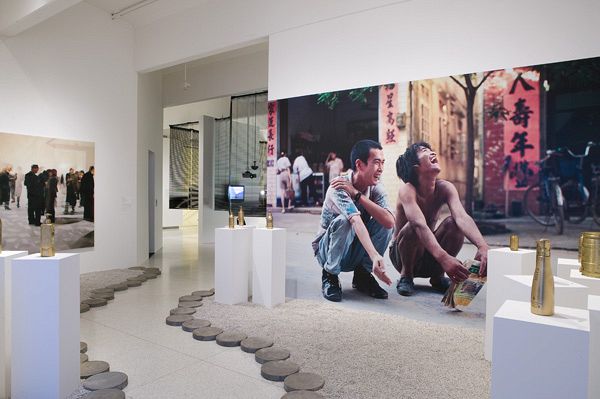
Brave New Worlds installation views. Walker Art Center, 2007.
Brave New Worlds installation views. Walker Art Center, 2007.
KF: So this is again an extension of understanding that the specificity of context is more than the generic assumptions of place?
DC: Yes, exactly. You could call it a global show, because there were 17 countries represented, but the actually the exhibition was a reminder that the world is still deeply fractured and preconceptions are still the norm.
Going back to Sean, the next thing we did was collaborate on a project by Mihnea Mirhnea, from Bucharest, Romania—the publication for the Romanian Pavilion in Venice in 2007 at the Venice Biennial, wherein I wrote an essay and Sean made a photo collage. The project was about anti-monuments and our collaboration was something to do with a shared, strange connection between the US, North Korea, and Romania, which Sean has made work about in the past and I was thinking about at the time. This was in 2007 and I wrote about how I was so affected by the Virginia Tech massacre. I was really upset about the whole event, and in particular about the whole racial profiling. It was one of those instances where I felt so “diasporic,” and very vulnerable in the U.S. as a Korean American being reduced to some psychological type. There was this story repeatedly in the media that described a heroic professor as a ‘Romanian Jew’ who held the door against the ‘Korean American’ to let some students escape. Somehow, this strange forced identification I experienced, and the fateful, tragic encounter between the troubled Korean American immigrant and the Romanian Jewish engineer who escaped persecution to the U.S.—and the cruel mash-up of a successful “American dream” and the utter failure of it—found a strange parallel to the way Sean’s “delirious librarian” approach of finding unseen connections in the world, and that’s how the collaboration happened.
By the way, Mihnea was one of the curators we had invited to write for Brave New Worlds, so it’s interesting to see how a number of different relationships have morphed over time. In fact the reason why we invited the curators to be part of the catalogue in the first place is because they were so instrumental in our research when we were traveling to research for the show. We became fascinated with the fact that in our business when you make contact with someone who is generous enough to give you some time they nearly always start by sitting you down and giving you a cram session on the nuances of the place you have just arrived in.
And so here we are listening to local knowledge that reinforces how all places are different to all other places, while trying to find a way to select artists to present together. So on the one hand Brave New Worlds was a global exhibition that was really trying to think of the world as a permanently disparate place, but on the other it was saying that it is no longer a world with non-translatable, non-bridgeable, irreconcilable realities.
KF: So it’s what common ground, or framework you choose? For example process over outcome?
DC: Yes. It’s about establishing right connections. We were interested in developing a network through which to find a shared framework. From the multiple threads some of the connections have then continued to evolve into other projects.
KF: What was the 4th project you then did with Sean?
DC: It was at REDCAT in Los Angeles and involved a collaboration between myself and Clara Kim, who is the director/curator there and an old friend and colleague, presenting Sean and Park Chan-Kyong together. Chan-Kyong and Sean have known each other well for a while and have great mutual respect for each other. So Clara and I wanted to create a situation where through a shared interest in the topic of Korea, the Cold War, and global politics, as well as methodologies of research and the archive, but with different enough practices and backgrounds, the artists could create a conversation that could really enrich their own thinking.
KF: I just want to finish with asking you a little about the importance of research in your practice. With your recent move to MoMA, you have been able to extend opportunities for research and so has this affected your trajectory?
DC: Let me try to answer it by reaching back. When I was working at the Asian Art Museum I felt as though I was personally coming from a peripheral place, being interested in the contemporary as well as the traditional, while also trying to really understand what the institutional mission was. At the Walker I was coming from a peripheral place, but at the same time centrally situated within the institution. At MoMA I think it's the same, but the context is different; now I have to think in relation to the 150 years of modern and contemporary art history. MoMA is an institution, which has not only defined but also constructed the history of modern art, and I think my program within that history is similar to what it’s been elsewhere paradoxically; I want to make my institution a little more global by thinking more internationally. But, the way I go about doing that to contextualize the program is totally different.
KF: Yes, the potential there is incredible for somebody like you who can think very independently, while working in collaboration with people and having an understanding of what an institution actually is.
DC: Yeah, I feel like it’s like a treasure box. I think one accomplishment I am very proud of at the Walker is to build up the collection of Tetsumi Kudo, whose retrospective I organized in 2008, so now it has the largest collection of his work in the West, along with some other very important postwar Japanese works. Together, these works can actually tell some sort of story of post-war Japanese art in relation to internationalism like no other place in this country. But at MoMA there are already several hundred art works in the collection. So now I can use my specialties in relation to the collection that already exists versus trying to build something from very little. The human resources are also unbelievable. My fellow curators have incredible knowledge! For example, I have the privilege of developing an internal workshop thinking around the notion of alternative or parallel modernities—that is, parallel to the story as told by MoMA—in conversation with many of my curatorial colleagues. In one instance we are going to use Cubism to chart the parallels in an internal workshop and a possible public program in the near future, in part because MoMA is the institution that defined the place of Cubism within modern art history, but also because it can be proven that the style/movement was very important in India, in Japan, in Brazil, and also in Iran, at different points and for different durations. So it’s an idea I developed first with the International program—Jay Levenson, the director, and Gwen Farrelly, the assistant director—and now we are in the process of talking to colleagues who are real specialists in Cubism, such as my closest Painting and Sculpture colleagues like Ann Temkin, Leah Dickerman, and Anne Umland, who can advise on building a truly international perspective on the topic.

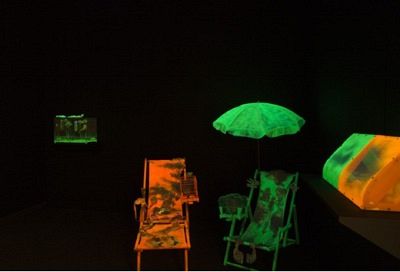
Top: Tetsumi Kudo: Garden of Metamorphosis installation view. Walker Art Center, 2008. Bottom: Tetsumi Kudo. Blacklight view of your portrait, 1966.
Left: Tetsumi Kudo: Garden of Metamorphosis installation view. Walker Art Center, 2008. Right: Tetsumi Kudo. Blacklight view of your portrait, 1966.
KF: This could be a lifetimes project in itself!?
DC: It could! But it’s one that needs many voices, not just mine. However I think it's a good example of how, as a young curator with a different background and training and experience, it’s important to me to recognize the kinds of questions I should be asking. If, by asking what we think Cubism as an international phenomenon can really tell us about the periodization of modern art history, I can get people to discuss the fact history is not a singular, but radically multi-layered phenomena, then I may also be able to get people to think about contemporary practices through a different lens also. I may not be the person who has the specialist knowledge of a specific subject like Cubism, but now I think I can say that I know the questions to ask to get a different conversation going.

